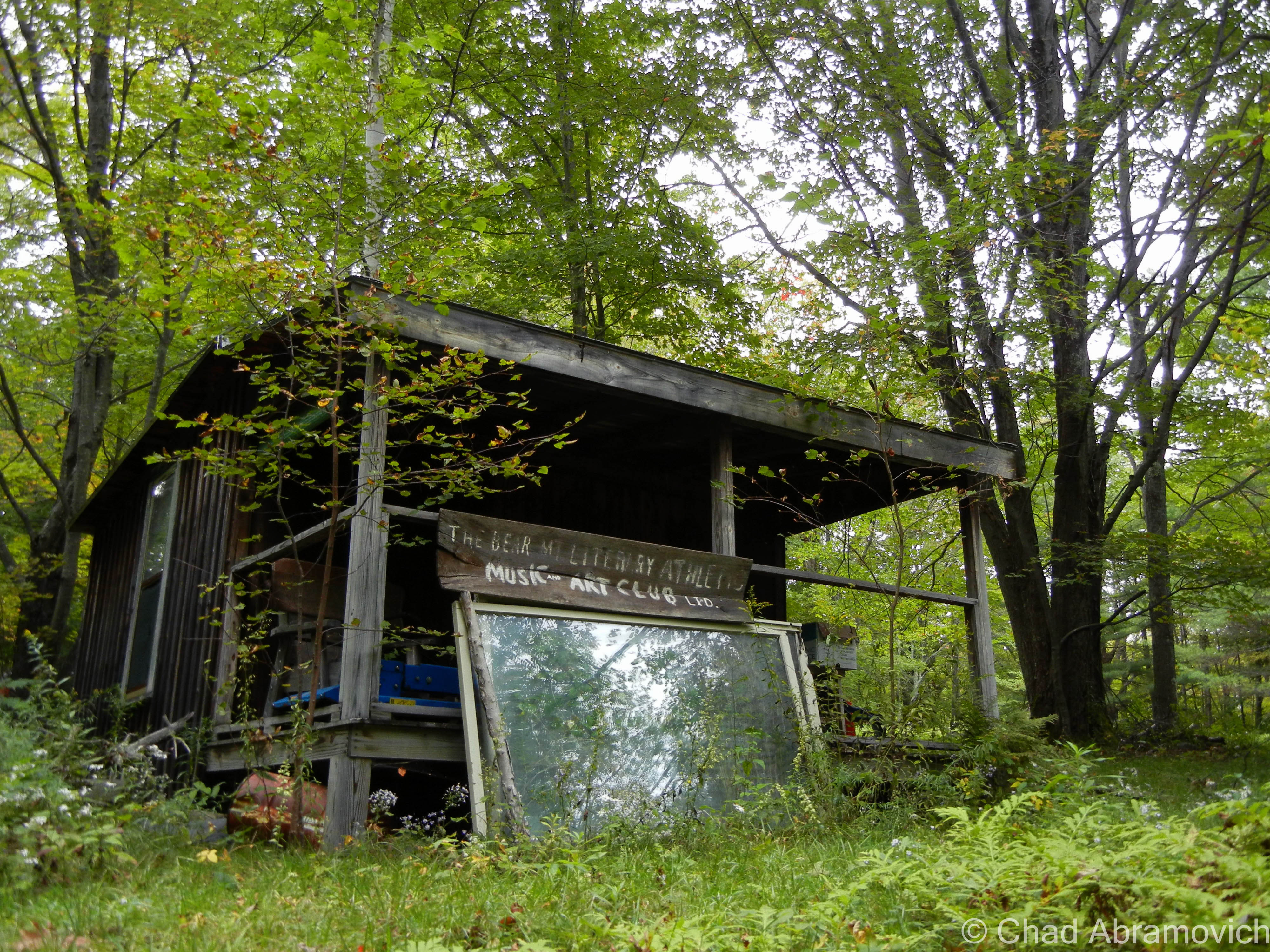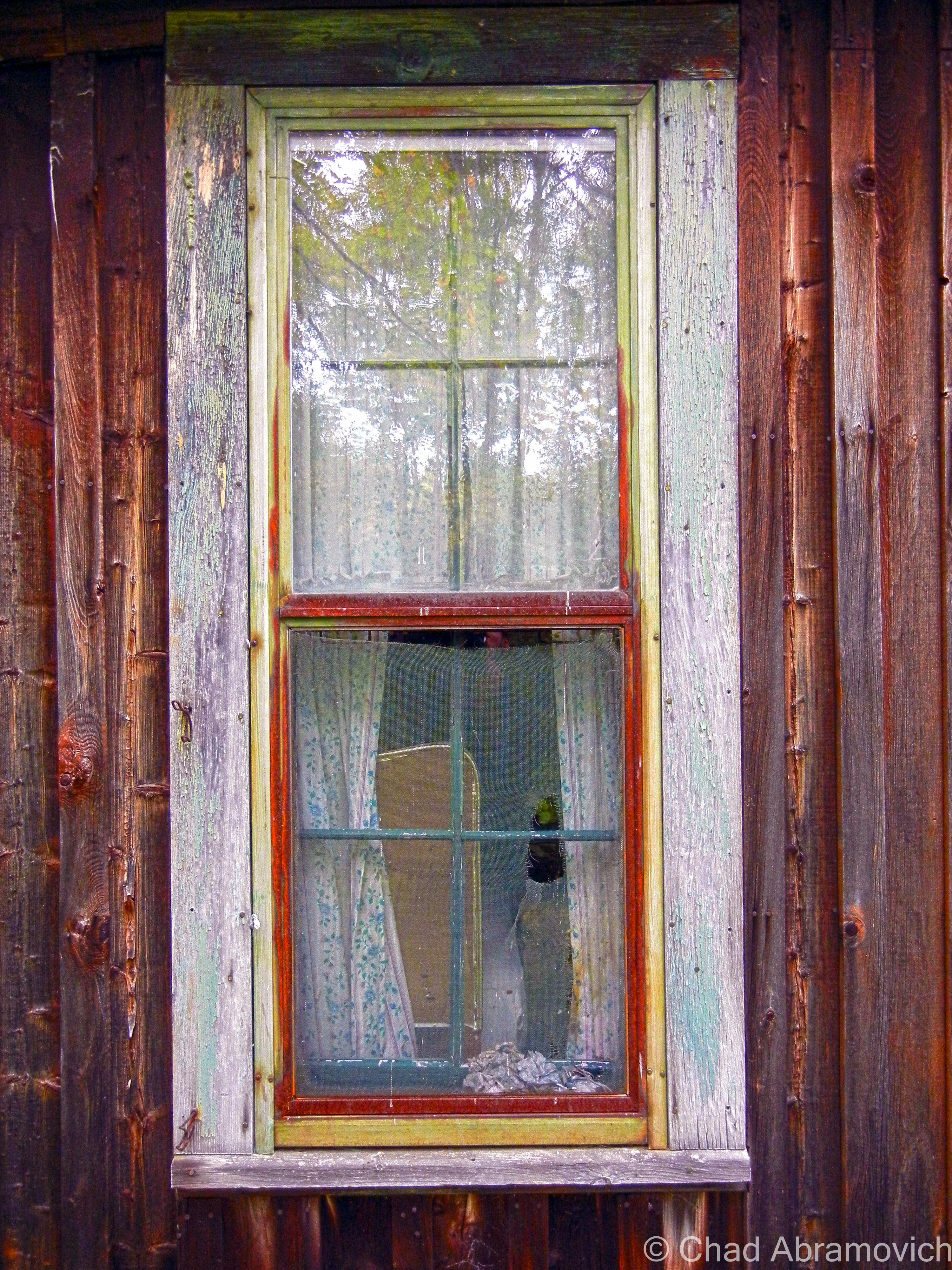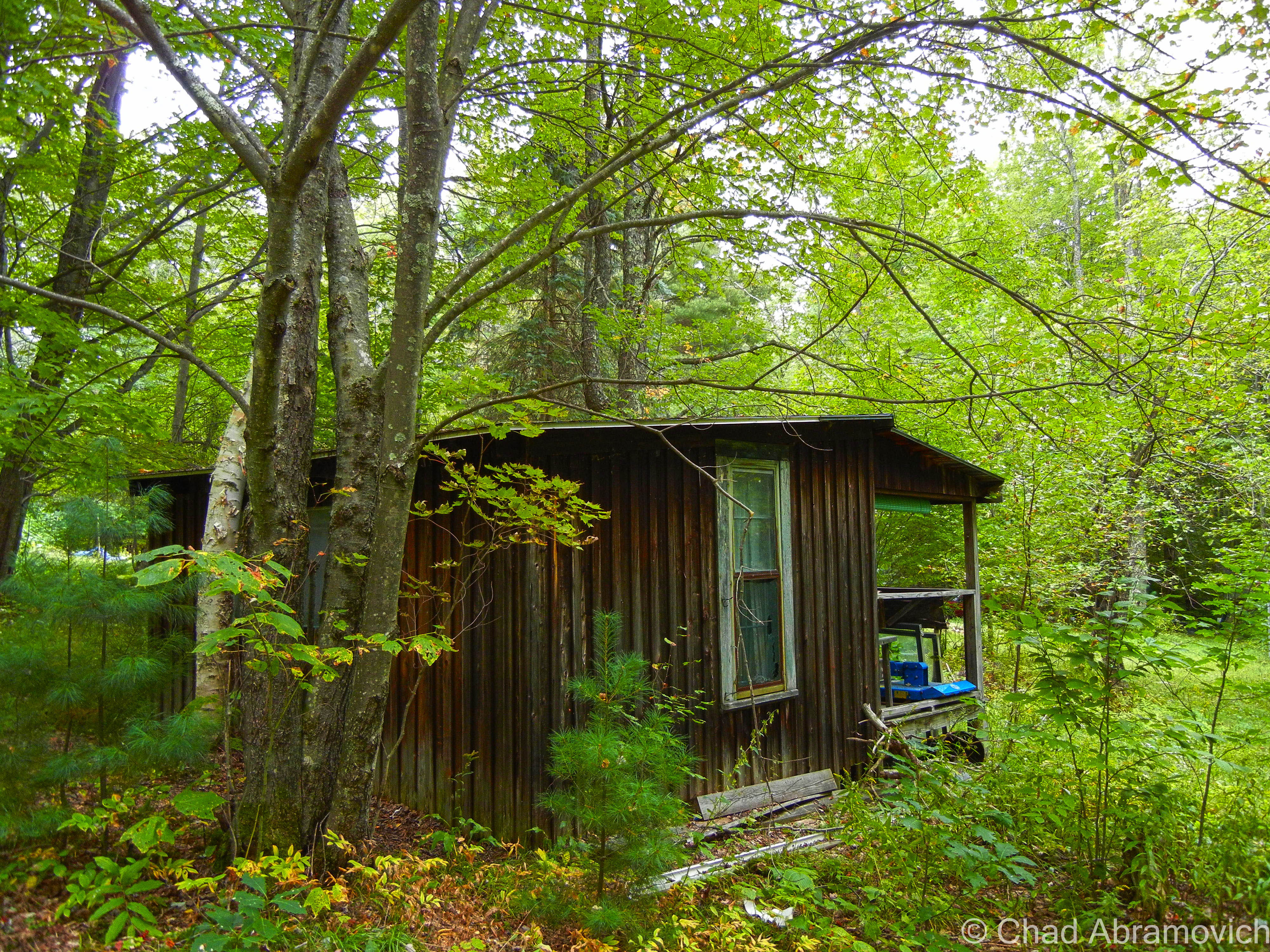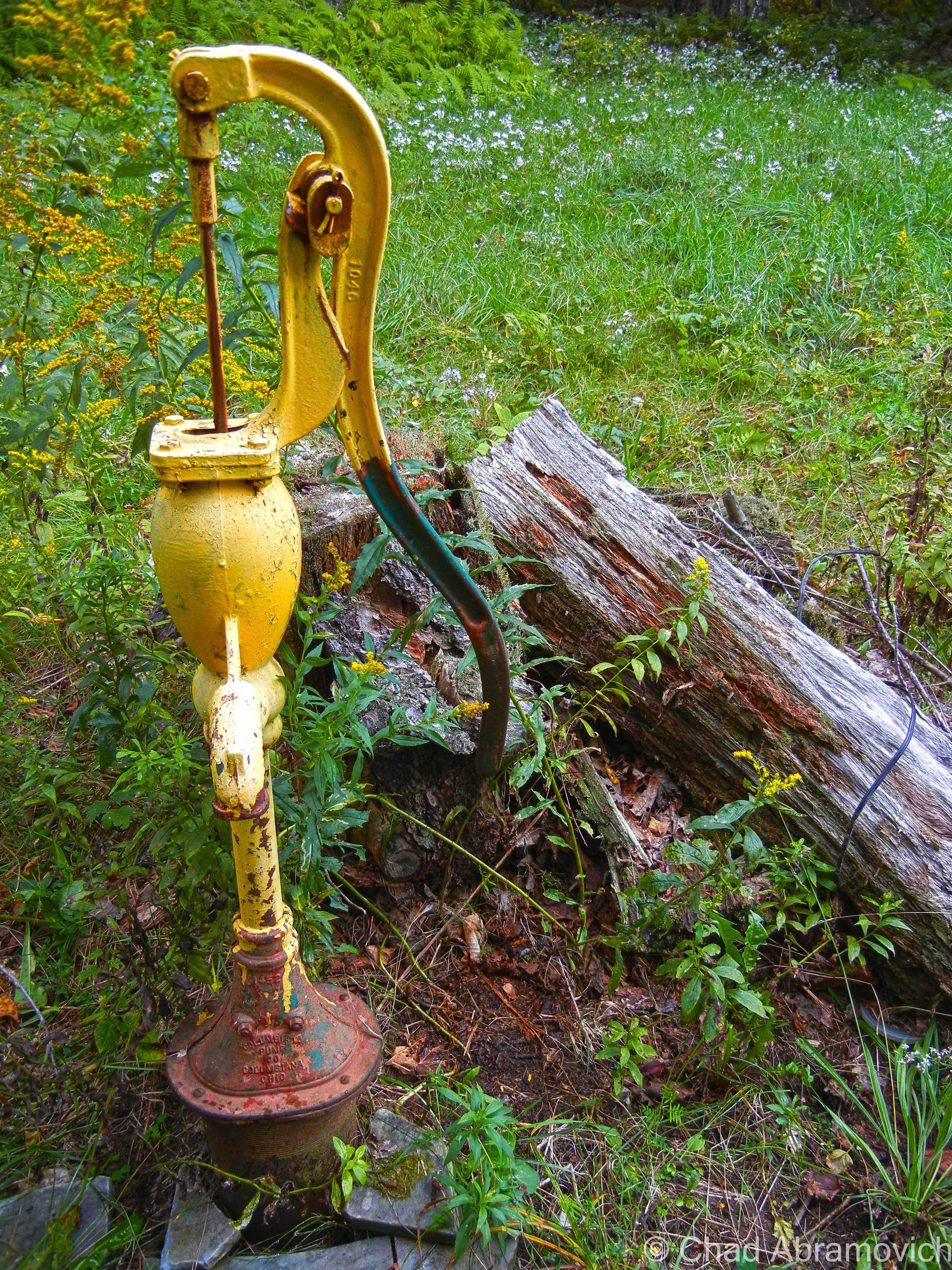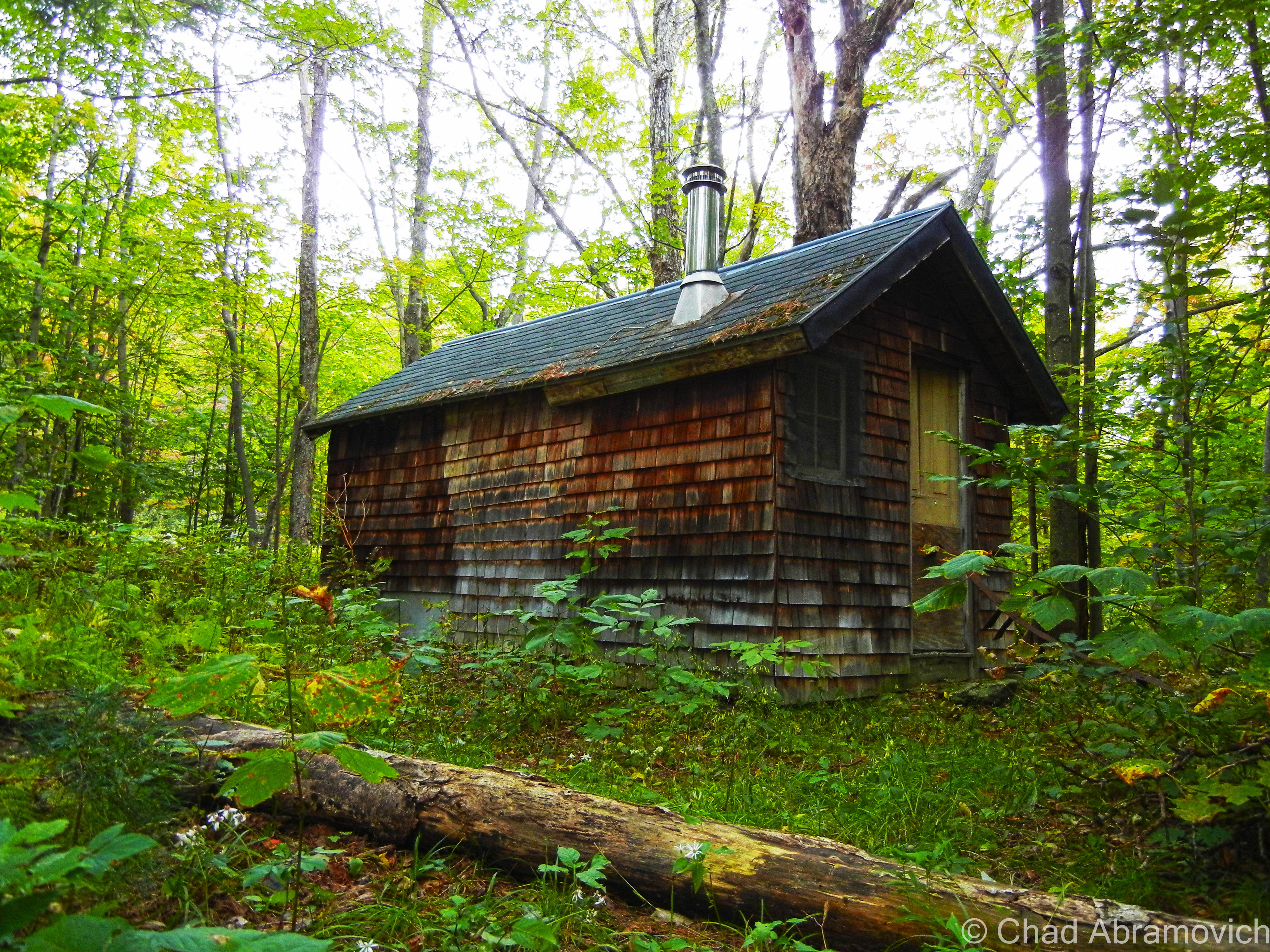In the years of my adolescence, I would stumble upon this abandoned summer camp, existing in the summer woods and melancholy haze.
The skies were promising fury, even through the thick canopy over head. But I was curious. The property had long grown wild, the wooden cabins were almost indistinguishable amongst the thick foliage and colors of the forest. But through the tangled wall of young hardwood trees, a brown sign with birch tree legs was crookedly standing, establishing an identity to this intriguing place – the hand painted letters were still legible after years of fading. “Bear Mountain Literary Athletic Music and Art Club LTD” was the official name of the collection of ruins, but the only things living around here didn’t want to talk.
Stepping off the road and into a weedy clearing, the wet grass soaking the bottoms of my jeans, I began to get a better picture at the camp. A few small wooden cabins lay scattered around a central area, where the woods extended far back dark and deep. Maybe it’s my love for anything old, rustic and mysterious that drew me to fall in love with this place, and the charm of its decay. The cabins were done in wood paneling, with old farm house style windows, all were brilliantly aging as the years passed on.
Inside one of the cabins revealed old plaster walls, only beginning to show signs of water damage. There were bunk beds still outfitted with down pillows and musty blankets and a small woodstove in the corner. Through the dim light that entered through a nearby window, the swirling dust seemed to become swallowed by the shadows. And there was a distinct musty smell that you’d expect an old cabin to inhabit, a smell that is ironically pleasant and nostalgic – almost as if to say “sorrow isn’t suppose to be here”
Near one of the old cabins, almost lost in the weeds, was an original water pump that no doubt supplied the camp with fresh mountain water. And a few pulls to the old pump – accompanied by some agonizing groans proved that it still worked, as freezing water poured at my feet.
Along the road in the deadfall of hardwood trees sat the worst part of the camp, a long and awkward rectangular building that was so ramshackle that I opted not to venture inside. Because it had no foundation, the entire building looked like it could be toppled with a good push, turning it into a firewood pile. It once had a front porch that ran along the entire backside of the building, the side that faced the camp, but it had long collapsed, its shingled roof mangled in a bed of weeds and dead lupines. Inside fared no better. The floor had disintegrated, the tall grass coming in. An old refrigerator and cast iron stove sat in a corner of a dark room, toppled on their sides. Broken glass and rusted nails were everywhere.
So, what was this place? How old was it? And when did it close? I had no answers, but I had a few suspicions. I knew it probably wasn’t affiliated with the Green Mountain Club or the CCC, so it had to be a private operation. The entire property looked dated, probably going back to the 1930s I guessed. But I was stumped.
I couldn’t explain what I was feeling as I stood on that wooded mountain side that dull afternoon, as I felt a change coming up as the air cooled down. At one time this camp probably provided cherished memories to several kids who sought the wisdom and promises of the mountains, but today, it looked like the good times were on me – and the camp would still sing its Shangri-La songs.
Years later, I would venture back to photograph it, and to my surprise, there was evidence of human presence now. The long ramshackle building that once lay near the roadside had been torn down, and the weedy clearing had been mowed. Though I was selfishly disappointed, I was also relieved that there were some cabins still standing that I could photograph. I truly cherish the accolades of discovering and photographing these places – allowing them to awaken parts of me that were formerly in hibernation underneath the wistful silence of the forest.
A year later, I would make a return trip, and found that the old camp was finally in the process of renovation. One of the cabins had already been fixed up and a sand volleyball court was built in the middle of the clearing. And as luck would have it, I got a chance to meet the new owners, 2 friendly brothers from New Jersey. They bought the camp with the vision of carrying their dream of owning a summer retreat in Vermont deep into the mountains. They were nice guys, and selflessly took time from doing yard work to talk to me. They knew nothing of the camp’s history, but were able to offer a little bit of incite. They were told that the camp was built sometime in the late 30s or early 40s, and served as a summer camp for children. They weren’t sure when it closed, but one of them guessed the late 80s. Like many abandoned properties I’ve explored, the story was an old one. The camp eventually closed down due to shifting trends. In short, it became unpopular overtime. The cabins were too rotted to keep standing, so it made more sense to tear them down. But they kept one, and had already done extensive renovations on it, including new cedar shingling, windows and new front door. It looked great, and I couldn’t help but be a little jealous of them.
Feeling satisfied, I thanked them for their time. I’m glad someone else can now enjoy the property, but selfishly, I still wish it was the same fascinating and forgotten place I had stumbled upon years ago, just aching for me to discover its secrets.
—————————————————————————————————————————————–
To all of my amazing fans and supporters, I am truly grateful and humbled by all of the support and donations through out the years that have kept Obscure Vermont up and running.
As you all know I spend countless hours researching, writing, and traveling to produce and sustain this blog. Obscure Vermont is funded entirely on generous donations that you the wonderful viewers and supporters have made. Expenses range from internet fees to host the blog, to investing in research materials, to traveling expenses. Also, donations help keep me current with my photography gear, computer, and computer software so that I can deliver the best quality possible.
If you value, appreciate, and enjoy reading about my adventures please consider making a donation to my new Gofundme account or Paypal. Any donation would not only be greatly appreciated and help keep this blog going, it would also keep me doing what I love. Thank you!
Gofundme: https://www.gofundme.com/b5jp97d4




